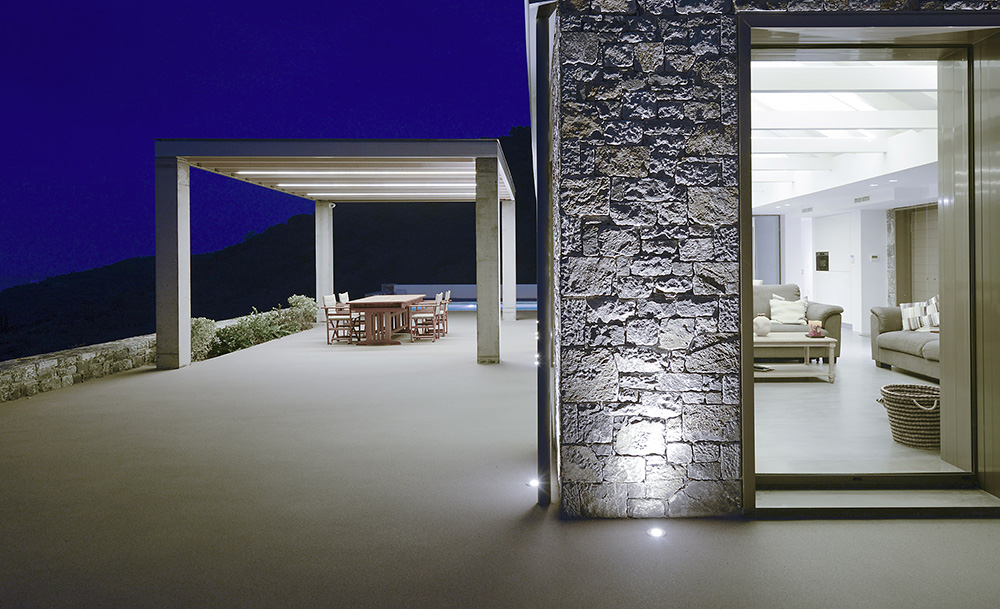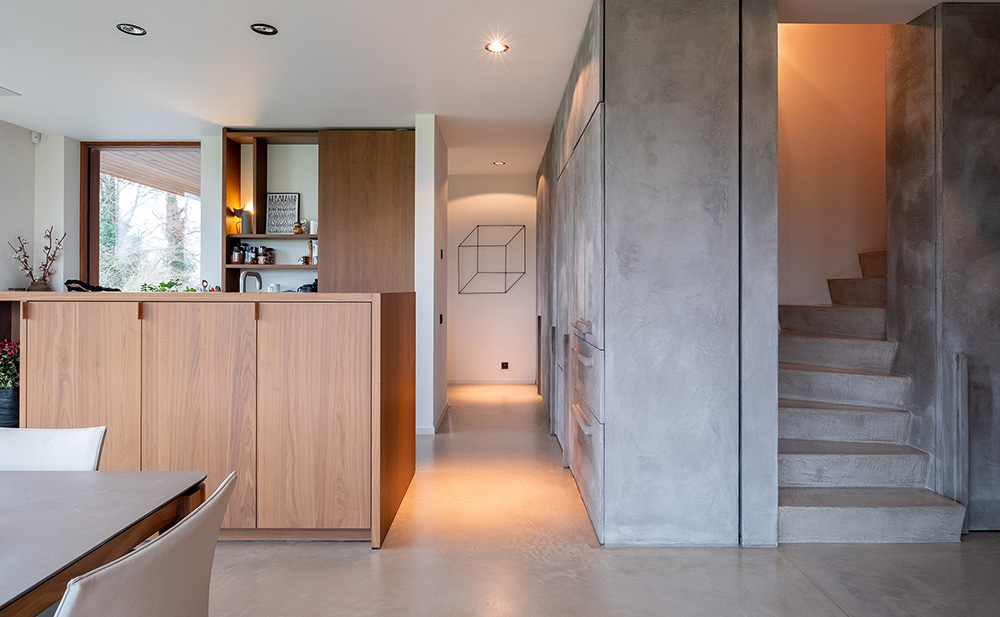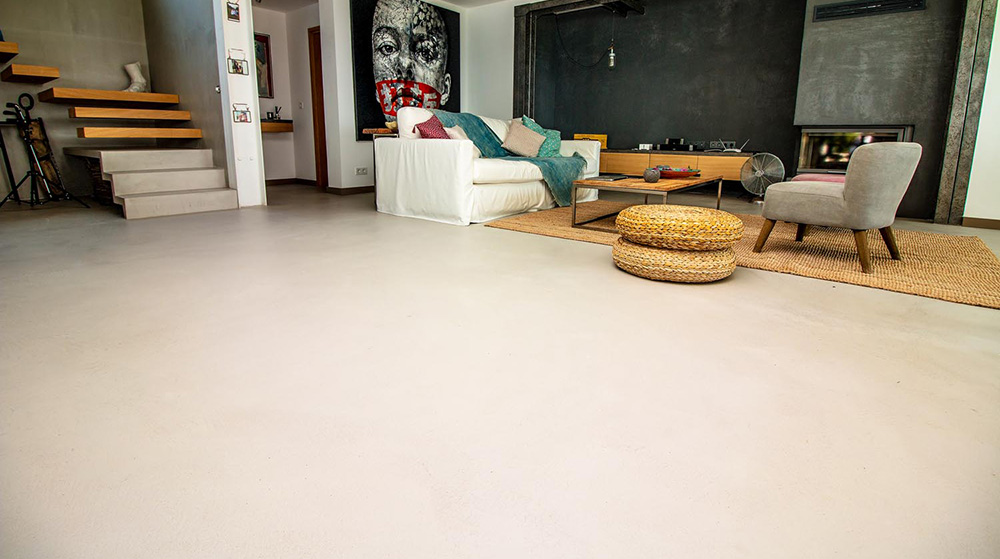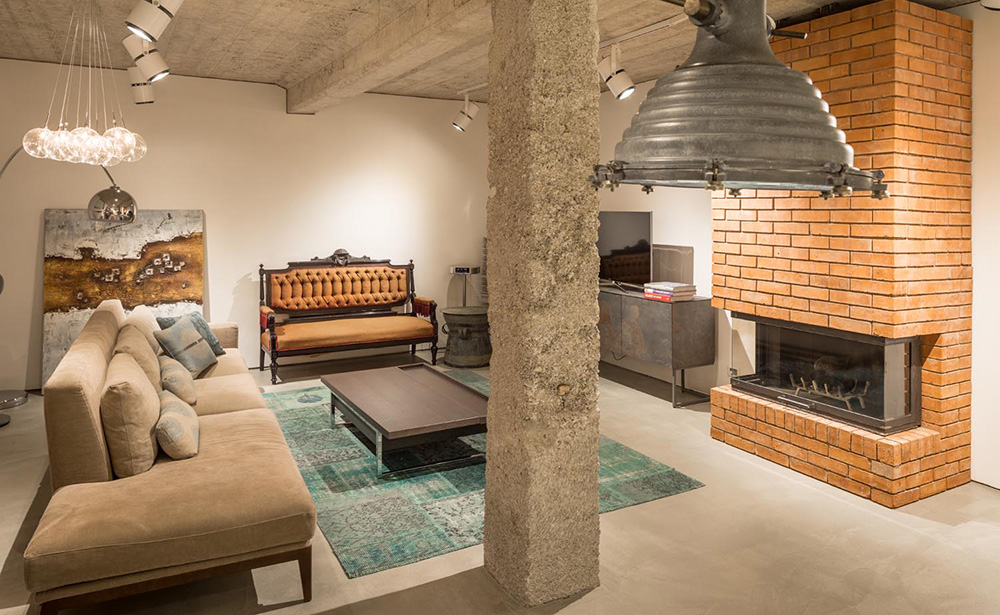To renovate your everyday environment, you can choose between two main options: concrete and porcelain tiles. Apparently very similar, these two materials have very different features:
1 – Porcelain floors or external flatwork are usually made from tiles obtained through a mix of clay, sand and natural minerals cooked in an oven at 1200-1400°C. This high-temperature cooking process ensures a hard, abrasion and impact-resistant material. Porcelain tiles can be employed for both internal and external surfaces, reproducing the appearance of wood, concrete, stone, marble etc.
2 – Concrete surfaces are cement-based and provide seamless, impact-resistant solutions with a natural appearance. Concrete can also be used to recreate the look of other materials such as wood, stone and marble as well as offering unique, custom colours. In addition, concrete solutions allow for great custom possibilities; Microtopping®, for instance, can be applied at a thickness of just 2-3 mm directly over existing surfaces without them being removed. Perfect for those who seek seamless, innovative finishes. Microcement flatwork always ensure a refined, unique outcome.

With its extreme resistance to adverse weather conditions and wear, Microtopping® is quick and easy to clean. Suitable for both internal and external, horizontal and vertical surfaces, it can also be applied where underfloor heating is installed. One of Microcement’s main advantages is its ability to cover many kinds of surfaces, not only horizontal.
How are concrete and porcelain applied as flatwork?
Minimal thickness concrete surfaces are applied through a quick and non-invasive process that prevents the inconvenience of removing existing surfaces. Ideal Work applicators are specifically trained to carry out quick applications that ensure a long-lasting outcome.
Porcelain surfaces are usually 3 mm thick and, before application, a detailed evaluation of the substrate needs to be done as follows:
1 – evaluation of the existing surface’s integrity;
2 – dust and other substances need to be carefully removed;
3 – no air bubbles should be incorporated under tiles during application.
Resistance
Both materials are durable and resistant to impact, staining and chemical agents. However, concrete flatwork – and in particular microcement flatwork – provide greater resistance to stress, high impact and more aggressive chemical agents.
Where can these two solutions be applied?
Concrete is perfect for both internal and external renovations, which can be carried out quickly and non-invasively by it being applied directly over existing surfaces. Concrete’s unique features make it ideal for horizontal as well as vertical surfaces such as:
1 – Plaster and masonry walls;
2 – Stairs;
3 – Bathrooms;
4 – Shower cubicles.

Porcelain is suitable for both internal and external applications, but it is not used as frequently over vertical surfaces.
Thickness
Choosing a low thickness surface provides several advantages such as quick application and reduced cost. You can renovate a space without removing original surfaces, opting for a quick and clean refurbishment.
What about porcelain? Its thickness may vary from 3 to 12 mm. Ultra-thin versions are available but do, however, require much more careful application.
Colours and effects
Concrete’s aesthetic possibilities are endless! It allows the obtaining of many different effects, such as:
1 – Gloss;
2 – Matt;
3 – Satin;
4 – Natural.
29 base colours can be combined in infinite ways to create the most diverse custom effects!
Porcelain also provides a number of effects such as concrete, wood, marble and stone; yet it does not allow additional, special combinations, leaving fewer custom possibilities for those who seek a unique, cutting-edge design.
Seamless surfaces
Both concrete and porcelain surfaces are seamless, unlike traditional tiled finishes.
Seamless solutions provide:
1 – higher hygiene levels and easier cleaning;
2 – the possibility to renovate without removal of existing surfaces;
3 – a visual effect of space enlargement;
4 – durability over time.

Why choose concrete flatwork?
It is now time to choose a solution for the surfaces you would like to renovate: concrete or porcelain? Let us have a look at the reasons why we believe you should choose concrete:
1 – no existing surface removal needed
2 – minimal thickness
3 – seamlessness
4 – visual continuity
5 – great custom possibilities
6 – easy to clean and maintain
This private villa in Imperia was greatly enhanced by the modern appearance and unparalleled performance of Microtopping®.
Se vuoi maggiori informazioni e farti consigliare per trovare la soluzione più adatta a te, contatta gli esperti Ideal Work
